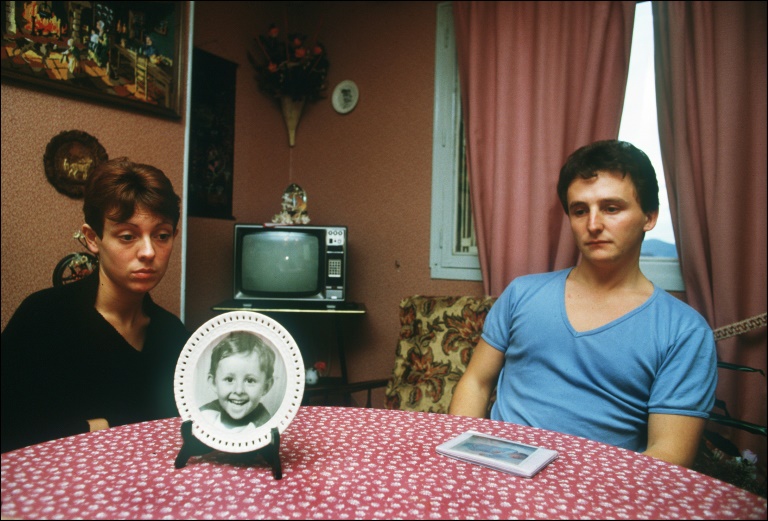The tragic case of Gregory Villemin, a four-year-old boy who was murdered in October 1984, has profoundly impacted French society and the judicial system, catalyzing a complex and ongoing investigation that spans nearly four decades. Gregory’s lifeless body, discovered in a river in eastern France with his hands and feet bound, became emblematic of one of France’s most haunting unsolved crimes. Despite investigators producing an extensive archive of nearly 18,000 reports and involving seven different judges over the years, the resolution of this case eludes the authorities, continuing to provoke interest from both the media and the public. This long-standing enigma highlights the mounting difficulties of the investigation, which mirrors the intricacies of a thriller, featuring victims, suspects, and a tangled web of evidence that has led investigators and family members through intense emotional turmoil.
Initially, the investigation progressed with seeming urgency, mostly focusing on threats directed at Gregory’s parents, Jean-Marie and Christine Villemin, received through anonymous letters and phone calls. One of these letters ominously accused Jean-Marie, claiming it was “his revenge.” Amidst the heated public interest, including invasive media coverage, the investigation quickly turned toward the extended Villemin family, particularly Bernard Laroche, a cousin of Gregory’s father, who became the first suspect. The intense scrutiny and invasive tactics of journalists, including secretly recording family conversations, exemplified the overwhelming atmosphere surrounding the case. In a shocking turn of events sharpened by emotional sorrow, Jean-Marie Villemin took matters into his own hands by killing Laroche in 1985, an act that resulted in his imprisonment and further complicated the investigation.
The subsequent years witnessed a series of dramatic developments. After Jean-Marie’s act of vengeance, the focus alternated between various family members, culminating in charges against Gregory’s mother, Christine Villemin, which were later rescinded due to errors made by investigating magistrate Jean-Michel Lambert. The judiciary’s shortcomings further fueled public outcry, and Lambert’s tragic suicide in 2017 underscored the deep despair and chaos that had enveloped the investigation from the outset. Thierry Moser, a lawyer for the Villemin family, expressed his frustration with the judicial process, labeling it as “pathetic” and commenting on the incompetence that hindered the pursuit of justice for Gregory. The case remained stagnant as subsequent investigators struggled to make significant headway with the evidence at their disposal.
Throughout the years, key figures in the narrative continued to emerge, most notably Gregory’s great aunt and uncle, Jacqueline and Marcel Jacob, as well as Murielle Bolle, a young girl who had previously testified against Laroche. However, legal technicalities prompted the dismissal of charges against these individuals, exacerbating the lingering feelings of frustration and hopelessness. Despite the setbacks, there remains a sense of cautious optimism among legal professionals involved with the case, sparked by advancements in forensic techniques, particularly DNA analysis and voice recognition technologies, which could potentially unveil new leads and clues pertinent to the long-dormant investigation. These tools represent a renewed hope that the passage of time and technological progress may finally crack the case that has remained a sore spot in French consciousness.
Amidst speculation by some legal professionals questioning whether the case would ever be resolved, Dijon chief prosecutor Philippe Astruc asserted that effort must continue. He emphasized the obligation to pursue justice, not just for the memory of Gregory Villemin but also for his grieving parents who have endured an unfathomable ordeal. The reflections on the case highlight a broader view on the society’s sentiment surrounding justice and the need for closure, particularly in relation to a crime that has destabilized both a family and a judicial system for decades. The numerous twists and turns, combined with overwhelming public interest, demonstrate the intricacies of human relationships and emotions interwoven in a tragedy that remains unsettled.
As former gendarmerie colonel Etienne Sesmat noted, critical evidence such as DNA specifically linked to the crime has yet to be recovered, presenting significant barriers to reaching a conclusion. While contact DNA has been discovered, it does not provide sufficient grounds for definitive conclusions concerning suspects. Sesmat, who has authored a book on the case details, posited a strong conviction that Bernard Laroche was indeed the perpetrator—a theory supported by some of the Villemin family’s lawyers. Yet the lack of hard evidence has generated skepticism among others in the legal field about the possibility of ever conclusively resolving the mystery.
Ultimately, the continuing developments in the Gregory Villemin case provoke a complicated mix of emotions within the French populace, drawing attention not only to the harebrained efforts of the past but also raising questions about the integrity of justice systems in dealing with high-profile cases. As the investigation persists, guided by the remnants of hope and compelled by a moral obligation to honor Gregory’s memory, the collective plea for justice fuels the desire for answers. Whether technology will aid in breaking the deadlock of this prolonged mystery remains to be seen, sparking fervent discourse on what truly constitutes closure for victims’ families and how society may reconcile an enduring quest for truth alongside the shadows of past failures.

